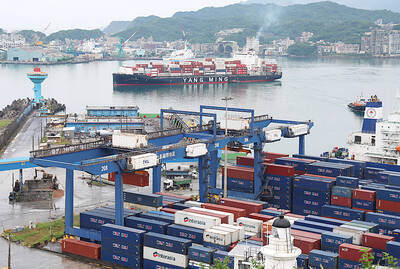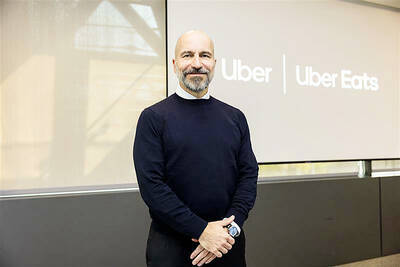When it comes to global warming, the Bush administration puts its faith in volunteerism and new energy technologies to scale back the American Everest of heat-trapping gases. But government studies say the results are at best uncertain.
One thing is not: Each year, the mountain of "greenhouse" gases emitted by the US grows bigger.
While the rest of the developed world requires -- but isn't always achieving -- mandatory cuts in carbon dioxide and other emissions, the country adding the most gases to the atmosphere is deadlocked in a debate over how to deal with it.
Individual states, meanwhile, are taking the lead.
Voluntary programs emphasized by President George W. Bush since 2002 are claimed to be sparing the atmosphere 270 million tonnes of carbon dioxide a year, or 4 percent of US emissions.
But the US government doesn't know -- and often can't verify -- whether the reductions reported by 230 US companies are real.
"It's difficult to prove," said Paul McArdle, who manages the Energy Department's voluntary reporting system. "It's my sense that some of these are real reductions."
What's more, McArdle acknowledged, companies can increase their emissions overall but still claim cutbacks -- by counting as reductions such steps as replacing old lighting, using more efficient vehicles or planting trees.
In a review last April, Congress' Government Accountability Office questioned Washington's ability to monitor these voluntary efforts.
"Determining the reductions attributable to each program will be challenging," it said.
Carbon dioxide from burning coal, oil and other fossil fuels is the biggest of the greenhouse gases, so called because they create a heat-trapping blanket when released into the atmosphere. Others are methane, nitrous oxide and synthetic gases.
The atmosphere holds more carbon dioxide now than it has for hundreds of thousands of years, and the Earth's surface warmed an average 0.5oC over the past century.
As a first step, the White House talks of reducing the "intensity" of US carbon pollution -- not shrinking emissions overall, but reducing the carbon dioxide emitted per unit of economic growth.
"Our objective is to significantly slow the growth of greenhouse gas emissions and, as the science justifies, stop it and then reverse it," said James Connaughton, chairman of the White House Council on Environmental Quality.
"We're making good progress. It's reasonably ambitious, but it still provides for reasonable human welfare," he said.
Now, the US is spending US$3 billion each year researching technologies to cut global warming and US$2 billion on climate research.
In a program called the Asia-Pacific Partnership, Bush is also working with Australia, China, India, Japan and South Korea -- producers of half the world's greenhouse gases -- to attract private money for cleaner energy technologies.
Connaughton calls that joint effort a major breakthrough.
Senator Jim Jeffords, an independent, calls it an "excuse for further delay."
Bush envisions using more hydrogen powered vehicles, electricity from renewable energy sources and clean coal technology.
The Energy Department's technology program has helped build 34,000 new energy-efficient homes and it plans to create "bioenergy" research centers and to advance research into hydrogen fuel and fusion energy.
However, critics say the government effort is too slow and needs refocusing.
A review by the Energy Department's research lab said the program focused too much on work that can lead to "only incremental improvements" and called for emphasis on "exploratory, out-of-the-box concepts."
A new government economic analysis recommends paying attention to markets in combination with research.
The Congressional Budget Office report said any cost-effective US policy on global warming must put a price on carbon -- via an emissions tax or a "cap and trade" system of buying and selling emissions allowances among companies, as in Europe.

CHIP RACE: Three years of overbroad export controls drove foreign competitors to pursue their own AI chips, and ‘cost US taxpayers billions of dollars,’ Nvidia said China has figured out the US strategy for allowing it to buy Nvidia Corp’s H200s and is rejecting the artificial intelligence (AI) chip in favor of domestically developed semiconductors, White House AI adviser David Sacks said, citing news reports. US President Donald Trump on Monday said that he would allow shipments of Nvidia’s H200 chips to China, part of an administration effort backed by Sacks to challenge Chinese tech champions such as Huawei Technologies Co (華為) by bringing US competition to their home market. On Friday, Sacks signaled that he was uncertain about whether that approach would work. “They’re rejecting our chips,” Sacks

Taiwan’s exports soared 56 percent year-on-year to an all-time high of US$64.05 billion last month, propelled by surging global demand for artificial intelligence (AI), high-performance computing and cloud service infrastructure, the Ministry of Finance said yesterday. Department of Statistics Director-General Beatrice Tsai (蔡美娜) called the figure an unexpected upside surprise, citing a wave of technology orders from overseas customers alongside the usual year-end shopping season for technology products. Growth is likely to remain strong this month, she said, projecting a 40 percent to 45 percent expansion on an annual basis. The outperformance could prompt the Directorate-General of Budget, Accounting and

BARRIERS: Gudeng’s chairman said it was unlikely that the US could replicate Taiwan’s science parks in Arizona, given its strict immigration policies and cultural differences Gudeng Precision Industrial Co (家登), which supplies wafer pods to the world’s major semiconductor firms, yesterday said it is in no rush to set up production in the US due to high costs. The company supplies its customers through a warehouse in Arizona jointly operated by TSS Holdings Ltd (德鑫控股), a joint holding of Gudeng and 17 Taiwanese firms in the semiconductor supply chain, including specialty plastic compounds producer Nytex Composites Co (耐特) and automated material handling system supplier Symtek Automation Asia Co (迅得). While the company has long been exploring the feasibility of setting up production in the US to address

OPTION: Uber said it could provide higher pay for batch trips, if incentives for batching is not removed entirely, as the latter would force it to pass on the costs to consumers Uber Technologies Inc yesterday warned that proposed restrictions on batching orders and minimum wages could prompt a NT$20 delivery fee increase in Taiwan, as lower efficiency would drive up costs. Uber CEO Dara Khosrowshahi made the remarks yesterday during his visit to Taiwan. He is on a multileg trip to the region, which includes stops in South Korea and Japan. His visit coincided the release last month of the Ministry of Labor’s draft bill on the delivery sector, which aims to safeguard delivery workers’ rights and improve their welfare. The ministry set the minimum pay for local food delivery drivers at